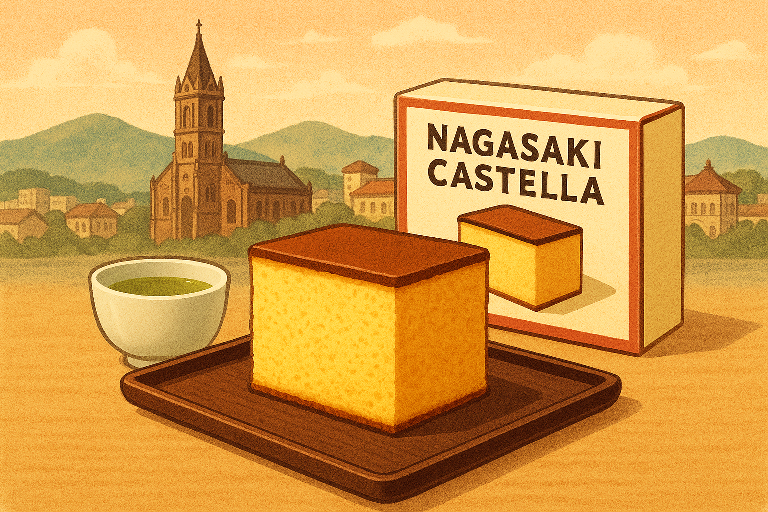
Among Japan’s many famous sweets, Nagasaki Castella stands out as a soft, golden sponge cake with a rich history. Originating in the 16th century, this beloved treat was introduced to Japan by Portuguese missionaries and traders who arrived in Nagasaki — then one of the few ports open to the outside world. The Japanese adapted the recipe to local tastes, creating a moist, fine-textured cake made simply from eggs, sugar, flour, and starch syrup.
Today, Castella is a symbol of Nagasaki’s international heritage and craftsmanship. Its golden brown top and delicate sweetness make it a perfect companion to green tea or coffee. Visitors to Nagasaki can enjoy freshly baked Castella in specialty shops, where the scent of warm sponge cake fills the air. Many stores also offer beautifully packaged boxes — ideal as souvenirs that carry the gentle taste of history.
For those who love both flavor and story, Nagasaki Castella offers a bite of Japan’s cultural exchange — soft, sweet, and timeless.
長崎カステラ:海から届いた甘い遺産
日本の数ある有名な菓子の中でも、長崎カステラは柔らかく黄金色に輝くスポンジケーキとして、豊かな歴史を持つことで際立っています。16世紀に起源を持つこの愛されるお菓子は、ポルトガルの宣教師や商人によって日本にもたらされました。当時、長崎は海外に開かれた数少ない港の一つでした。日本人はそのレシピを自分たちの味覚に合わせて改良し、卵・砂糖・小麦粉・水飴だけで作る、しっとりとしてきめの細かいケーキを完成させました。
今日、カステラは長崎の国際的な遺産と職人技の象徴です。その黄金色の表面と繊細な甘さは、抹茶やコーヒーとの相性が抜群です。長崎を訪れる人々は、専門店で焼きたてのカステラを楽しむことができ、店内には温かいスポンジケーキの香りが漂います。多くの店では美しく包装された箱入りのカステラも販売されており、歴史の優しい味わいを伝えるお土産として最適です。
味と物語の両方を愛する人にとって、長崎カステラは日本の文化交流の一片を味わうような存在です──柔らかく、甘く、そして時を超えて愛され続けています。
